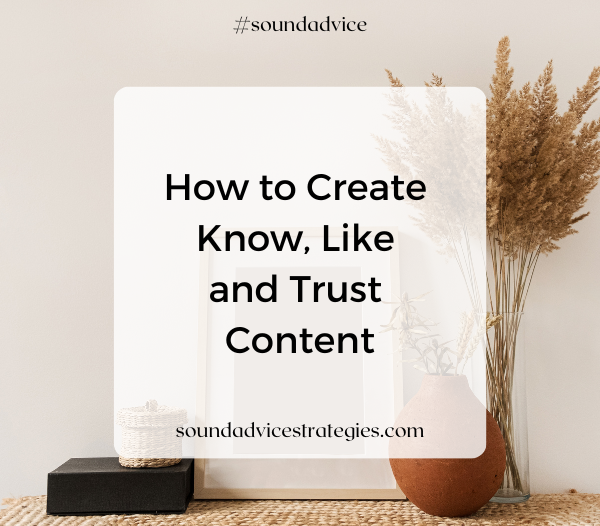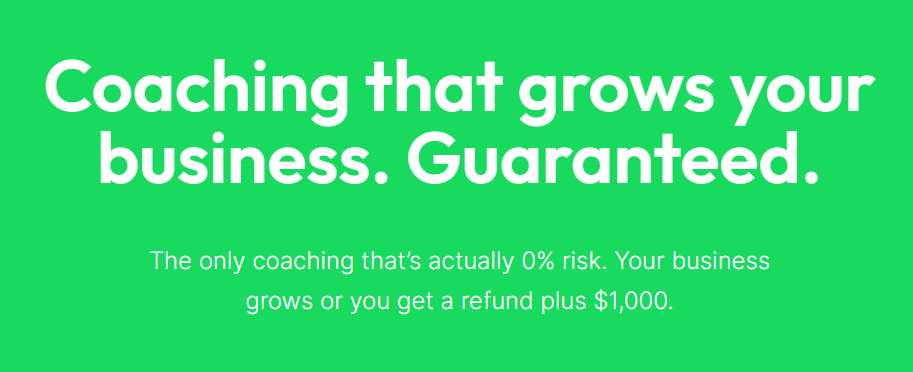
We help our clients build lasting relationships with their clients and prospects by producing their audio content bringing in new business and new opportunities.
Are you stopping after KNOW, LIKE and TRUST?
If you’ve done any marketing or been on a webinar for course creators or paid for a course to sell without selling (seriously wish they’d just stop with that) then you’ve heard the concept of KNOW, LIKE and TRUST.
That’s a great place to start. But it’s just the beginning.
Thanks to John Jantsch of Duct Tape Marketing, the rest of that formula has been ingrained into the SoundAdvice business model as best as I can. Like all things marketing it’s a continual work in progress. He calls it the Marketing Hourglass.

Here’s how we approach things:
KNOW
LIKE
TRUST
TRY
BUY
REPEAT
REFER
Did you cringe when you saw those steps or did you do a little happy dance?
Maybe a little of both? I get it. In a perfect world, we’d have content for each of those steps and your prospective clients and current customers would flow from each stage to the next completely understanding how you can help them and why they should hire or buy from you. Right. Now.
Let’s make this make sense. Here are some content ideas around each step of this process.
Please note – some of these will cross over – trying and buying are closely related for example so the content can do double duty too.
KNOW content.
A simple, clear statement about what you do, who you do it for and the amazing outcome they experience as a result. Everywhere.
- Website headline on home page
- In every online bio
- About page with this clearly explained
- Podcast/Video/blog (bonus for all 3) explaining this very concise direct statement
Example:
Option 1:
We help our clients produce audio content that allows them to reach more people, develop amazing customer relationships that leads to sales.
Option 2:
We help our clients build lasting relationships with their clients and prospects by producing their audio content bringing in new business and new opportunities.
Which one do you like best? Let me know!
One of the BEST examples?
Building a Storybrand.
Clarify Your Message so Customers Engage
LIKE Content
Like is subjective. What I like may be different from what you like. The key here is to know what your potential client likes. Note: Jen Liddy is genius at this, so follow her and you can be too!
Here are some ideas to get you started:
- Create content (posts, social media, podcasts) that are aspirational-feel good content
- Remember you are talking to and selling to people (even if you are B2B) so use language that’s personal. I hope it’s clear I mean for that to be helpful to you. (see what I did there?)
- Provide value. I know this is touted but it’s for a good reason. Share what you know. A checklist or how-to for something you are really good at is a great way for people to get to KNOW and LIKE you.
- Let the real you shine through. Share your story so people feel like they know who you are as a person. Dog lover? Coffee connoisseur? Amateur tap dancer?
Shannon Mattern does a great job on her About Page explaining how she can help potential clients and who she is as a person.
Even a B2B organization can be personal. Scott Monty did this so well when he was the first Global Head of Social Media and Digital Communications at Ford Motor Company.
He’s credited with turning around the business, no small thing, by being personal. People developed a good opinion of Ford because they like him and the way he made his followers feel seen and heard.
TRUST Content
You already know how important it is to develop trust. A higher level of trust corresponds (most of the time) with a higher investment or price. Here are a few things you can do to help your prospective client put their faith in you and your product/services.
KNOW, LIKE and TRUST is just the beginning. Next I’ll cover TRY, BUY, REPEAT and REFER.
Some clients will jump to trust right away, some may take more time. It’s not always linear either so having relevant content for each step is helpful.
- Third party ratings, reviews and testimonials. Many of us aren’t all that great at tooting our own horn anyway, so letting past clients do the talking is an easy way to demonstrate your trustworthiness.
- Share success stories with as much transparency as possible. In some industries it may not be possible to identify a former client by name (if you want to do this, be sure you have permission) but you can clearly outline the work you/your company did and the outcome achieved.
- Provide access. Show that you are a real person (or that there are real people at your company) with photos, links to your LinkedIn profile, a phone number and an email where people can reach you is another good way to let people know you are legit.
- If it makes sense for your business model, a money-back (or other type) guarantee is a great way to reduce the risk and increase trust. Growth Tools has a guarantee that sets them apart AND increases trust. Bonus: This is their home page; the first thing you see.

Point to your content and make it easy for potential clients and new connections get to know you.
Here are a few ways to share the amazing KNOW, LIKE and TRUST content you’ve created:
- Send potential clients to a podcast episode that outlines what it’s like to work with you. Example: Kelsey Abbott sends people to this podcast episode so they can get to know how she works before the call. Genius!
- Do an interview (podcast/video/blog post, all 3) with a former client who is willing to share their experience
- Outline your process or framework in simple terms. You don’t have to give away proprietary info to do this. Show people that you have a specific method for getting results. Example: Jen Lehner hiring framework.
- Have conversations. One to one, one to many, in person, over zoom, on podcasts and video etc. What’s the saying? The secret to success is showing up? Maybe it should be the secret is showing up again and again and again!
You’re already good at some form of this. Most of us feel comfortable sharing helpful information, being friendly and kind, and showing up as a real person. Adding to you content with other types takes a bit of planning but it can really help people see you as a valued resource and expert.
Don’t let fear or uncertainty stop you. If you have a good size following on social media and an email list, perhaps starting with some trust content is a good next step.
If you’re just beginning, you can’t share too often about who you are and how you help.
Pick an easy first step and start.
Next up, TRY and BUY content strategies, examples and ideas.

